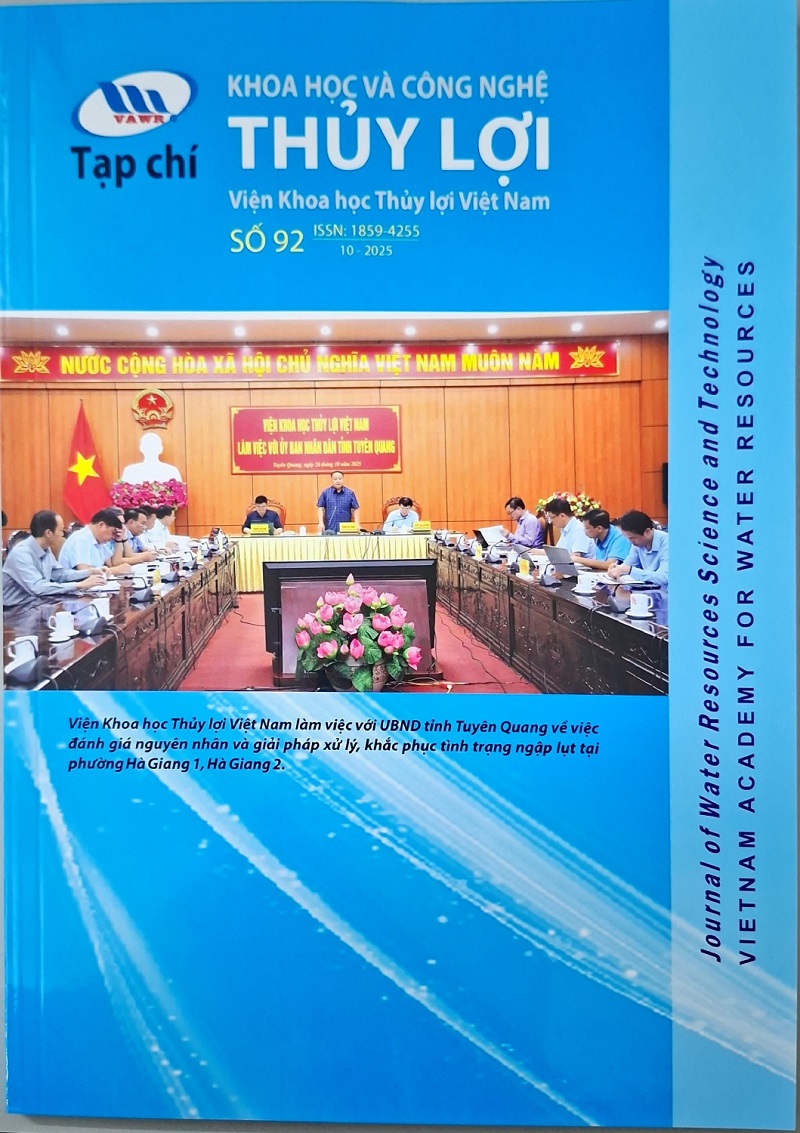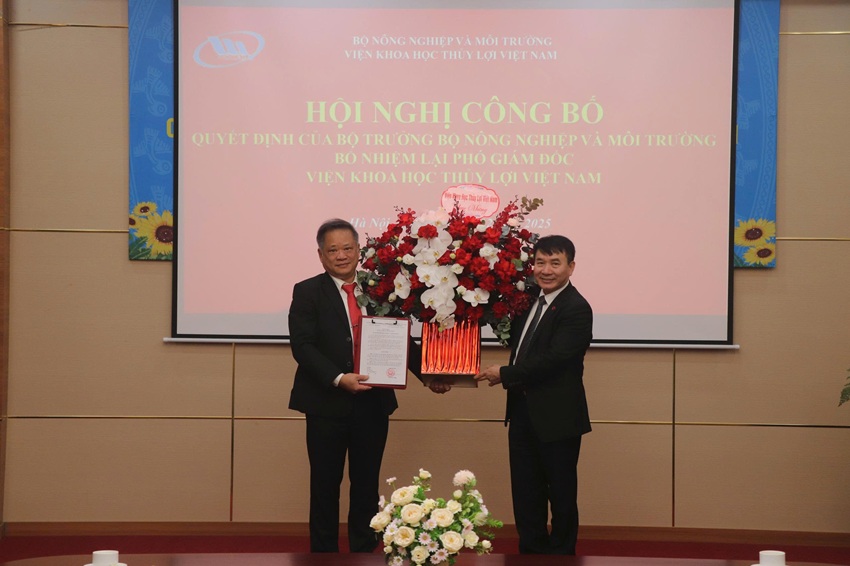A Non-Linear, Time-Variant Approach to Simulate the Rainfall-Induced Slope Failure of an Unsaturated Soil Slope: A Case Study in Sapa, Vietnam
28/10/2021In this study, the Transient Rainfall Infiltration and Grid-Based Regional Slope-Stability Analysis (TRIGRS), v2.1 program, and module SLOPE/W in the Geostudio package were adopted for assessing rainfall-induced slope failure. TRIGRS was developed by the United States Geological Survey to determine the time-varying groundwater table at the regional scale under rainfall infiltration. The program employs partial differential equations represented by one-dimensional vertical flow in homogeneous materials for unsaturated conditions. With the application of a simple runoff routing scheme combined with the mass balance between rainfall, infiltration, and runoff over the study area, the distribution of the transient pore-water pressures within the entire landscape was simulated considering both the surface and subsurface flow. Additionally, compared to the traditional two-dimensional approach, the topographical conditions were also considered during the groundwater simulation. For conducting the slope stability analysis, a typical cross-section was constructed based on the site description. The predicted water-tables at the observed time of failure of the typical section were extracted and used in SLOPE/W to conduct the time-dependent modelling of rainfall-induced slope failures. In this study, the non-linear method was employed for simulating unsaturated soil shear strength, and the stability of the slope was evaluated using Bishop’s simplified method. We applied the approach to the landslide event that occurred on August 5, 2019, in Sapa district, Lao Cai province, Vietnam. The event resulted in severe damage and blocked the road for days. The predicted results on the stability of the slope as the factor of safety were compared with the actual slope failure during the event. The results showed that, by inputting accurate data, the applied approach could provide valuable evidence about the time of the slope failure.
1. Introduction
2. The Study Area
3. Use of the TRIGRS for Simulating Rainfall-Induced Pore Pressure Change
3.1. Runoff Routing Scheme
3.2. Simulation of the Variation in Groundwater Table Rise Caused by a Rainstormin TRIGRS
3.3. Input Data for the Temporal Simulation of Rainfall-Induced Pore Pressure Change
4. Use of the SLOPE/W in the Stability Analysis of Unsaturated Slopes
4.1. Linear and Non-Linear Approach for Simulating Unsaturated Soil Shear Strength
4.2. Method and Data Used for the Slope Stability Analysis when the Groundwater Table is Available
5. Results and Analyses
5.1. Time-Varying Groundwater Table Within the Study Area Simulated by the TRIGRS
5.2. Stability Assessment of the Slope Using the SLOPE/W
6. Conclusion
References
[1] H. Rahardjo, T. T. Lim, M. F. Chang, and D. G. Fredlund, “Shear-strength characteristics of a residual soil,” Can. Geotech. J., Vol.32, No.1, pp. 60-77, 1995.
[2] I. Tsaparas, H. Rahardjo, D. G. Toll, and E. C. Leong, “Controlling parameters for rainfall-induced landslides,” Comput. Geotech., Vol.29, No.1, pp. 1-27, 2002.
[3] T. V. Tran, M. T. Trinh, G. Lee, S. Oh, and T. H. V. Nguyen, “Effect of extreme rainfall on cut slope stability: Case study in Yen Bai City, Viet Nam,” J. Korean Geo-Environ. Soc., Vol.16, No.4, pp. 23-32, 2015.
[4] T. V. Tran and M. T. Trinh, “Coupled and uncoupled approaches for the estimation of 1-D heave in expansive soils due to transient rainfall infiltration: A case study in Central Vietnam,” Int. J. of GEOMATE, Vol.17, No.64, pp. 152-157. 2019.
[5] T. V. Tran, D. Alkema, and R. Hack, “Weathering and deterioration of geotechnical properties in time of groundmasses in a tropical climate,” Eng. Geol., Vol.260, Article No.105221, 2019.
[6] G. S. Guan, H. Rahardjo, and L. E. Choon, “Shear strength equations for unsaturated soil under drying and wetting,” J. Geotech. Geoenviron. Eng., Vol.136, No.4, pp. 594-606, 2010.
[7] H. An, M. Kim, G. Lee, and T. V. Tran, “Survey of spatial and temporal landslide prediction methods and techniques,” Korean J. Agric. Sci., Vol.43, No.4, pp. 507-521, 2016.
[8] S. K. Vanapalli, D. G. Fredlund, D. E. Pufahl, and A. W. Clifton, “Model for the prediction of shear strength with respect to soil suction,” Can. Geotech. J., Vol.33, No.3, pp. 379-392, 1996.
[9] T. V. Tran, G. Lee, S. Oh, and M. Kim, “Effect of rainfall patterns on the response of water pressure and slope stability within a small catchment: A case study in Jinbu-Myeon, South Korea,” J. Korean Geo-Environ. Soc., Vol.17, No.12, pp. 5-16, 2016.
[10] T. V. Tran, G. Lee, H. An, and M. Kim, “Comparing the performance of TRIGRS and TiVaSS in spatial and temporal prediction of rainfall-induced shallow landslides,” Environ. Earth Sci., Vol.76, No.8, Article No.315, 2017.
[11] K. Miyamoto, “Numerical simulation of landslide movement and Unzen-Mayuyama disaster in 1792, Japan,” J. Disaster Res., Vol.5, No.3, pp. 280-287, 2010.
[12] T. V. Tran, G. Lee, and M. Kim, “Shallow landslide assessment considering the influence of vegetation cover,” J. Korean Geo-Environ. Soc., Vol.17, No.4, pp. 17-31, 2016.
[13] T.-T. Yu, T.-S. Wang, and Y.-S. Cheng, “Analysis of factors triggering shallow failure and deep-seated landslides induced by single rainfall events,” J. Disaster Res., Vol.10, No.5, pp. 966-972, 2015.
[14] T. Ishizawa and T. Danjo, “Rainfall indices at estimated occurrence times of sediment disasters triggered by the July 2018 heavy rainfall,” J. Disaster Res., Vol.14, No.9, pp. 1227-1235, 2019.
[15] C. W. W. Ng and Q. Shi, “A numerical investigation of the stability of unsaturated soil slopes subjected to transient seepage,” Comput. Geotech., Vol.22, No.1, pp. 1-28, 1998.
[16] N. Gofar and H. Rahardjo, “Saturated and unsaturated stability analysis of slope subjected to rainfall infiltration,” MATEC Web of Conf., Vol.101, Article No.05004, 2017.
[17] H. Rahardjo, A. Satyanaga, and E. C. Leong, “Unsaturated soil mechanics for slope stabilization,” Geotechnical Engineering J. of the SEAGS & AGSSEA, Vol.43, No.1, pp. 48-58, 2012.
[18] D. Sheng, A. Zhou, and D. G. Fredlund, “Shear strength criteria for unsaturated soils,” Geotech. Geol. Eng., Vol.29, No.2, pp. 145-159, 2011.
[19] D. G. Fredlund, H. Rahardjo, and M. D. Fredlund, “Unsaturated soil mechanics in engineering practice,” John Wiley & Sons, Inc., 2012.
[20] D. G. Fredlund and N. R. Morgenstern, “Stress state variables for unsaturated soils,” J. Geotech. Eng. Div., Vol.103, No.5, pp. 447-466, 1977.
[21] M. Alvioli and R. L. Baum, “Parallelization of the TRIGRS model for rainfall-induced landslides using the message passing interface,” Environ. Model. Softw., Vol.81, pp. 122-135, 2016.
[22] Geoslope International Ltd., “Stability modeling with Geostudio,” 2020.
[23] D. T. Bui, T. A. Tuan, N.-D. Hoang, N. Q. Thanh, D. B. Nguyen, N. Van Liem, and B. Pradhan, “Spatial prediction of rainfall-induced landslides for the Lao Cai area (Vietnam) using a hybrid intelligent approach of least squares support vector machines inference model and artificial bee colony optimization,” Landslides, Vol.14, No.2, pp. 447-458, 2017.
[24] D. M. Nguyen and Q. H. Tran, “Features of large-scale landslide at Hau Thao area, Sa Pa town, Lao Cai Province,” P. D. Long and N. T. Dung (Eds.), “Geotechnics for Sustainable Infrastructure Development (Lecture Notes in Civil Engineering 62),” pp. 917-922, Springer, 2019.
[25] C. W. W. Ng, B. Wang, and Y. K. Tung, “Three-dimensional numerical investigations of groundwater responses in an unsaturated slope subjected to various rainfall patterns,” Can. Geotech. J., Vol.38, No.5, pp. 1049-1062, 2001.
[26] S. Y. F. Kwok, “Stochastic analysis of coupled surface and subsurface flow model in steep slopes for slope stability analysis,” Master Thesis, Hong Kong University of Science and Technology, 2003.
[27] B. B. K. Huat, F. H. Ali, and T. H. Low, “Water infiltration characteristics of unsaturated soil slope and its effect on suction and stability,” Geotech. Geol. Eng., Vol.24, No.5, pp. 1293-1306, 2006.
[28] H. Zhang, F. Zhang, K. Shen, and M. Yuan, “A surface and subsurface model for the simulation of rainfall infiltration in slopes,” Proc. of Int. Symp. on Geohazards and Geomechanics (ISGG2015), Article No.012025, 2015.
[29] R. Wallach, G. Grigorin, and J. Rivlin, “The errors in surface runoff prediction by neglecting the relationship between infiltration rate and overland flow depth,” J. Hydrol., Vol.200, Nos.1-4, pp. 243-259, 1997.
[30] Apip, K. Takara, Y. Yamashiki, K. Sassa, A. B. Ibrahim, and H. Fukuoka, “A distributed hydrological–geotechnical model using satellite-derived rainfall estimates for shallow landslide prediction system at a catchment scale,” Landslides, Vol.7, No.3, pp. 237-258, 2010.
[31] R. L. Baum, W. Z. Savage, and J. W. Godt, “TRIGRS; A Fortran program for transient rainfall infiltration and grid-based regional slope-stability analysis (Open-File Report 2002-424),” U.S. Geological Survey (USGS), doi: 10.3133/ofr02424, 2002.
[32] R. L. Baum, W. Z. Savage, and J. W. Godt, “TRIGRS – A Fortran program for transient rainfall infiltration and grid-based regional slope-stability analysis, Version 2.0 (Open-File Report 2008-1159),” U.S. Geological Survey (USGS), doi: 10.3133/ofr20081159, 2008.
[33] R. L. Baum, J. W. Godt, and W. Z. Savage, “Estimating the timing and location of shallow rainfall-induced landslides using a model for transient, unsaturated infiltration,” J. Geophys. Res. Earth Surf., Vol.115, No.F3, Article No.F03013, 2010.
[34] W. R. Gardner, “Some steady-state solutions of the unsaturated moisture flow equation with application to evaporation from a water table,” Soil Science, Vol.85, No.4, pp. 228-232, 1958.
[35] R. M. Iverson, “Landslide triggering by rain infiltration,” Water Resour. Res., Vol.36, No.7, pp. 1897-1910, 2000.
[36] T. V. Tran, M. Alvioli, G. Lee, and H. U. An, “Three-dimensional, time-dependent modeling of rainfall-induced landslides over a digital landscape: A case study,” Landslides, Vol.15, No.6, pp. 1071-1084, 2018.
[37] D. W. Park, N. V. Nikhil, and S. R. Lee, “Landslide and debris flow susceptibility zonation using TRIGRS for the 2011 Seoul landslide event,” Nat. Hazards Earth Syst. Sci., Vol.13, No.11, pp. 2833-2849, 2013.
[38] T. V. Tran, G. Lee, T. M. Thu, and H. U. An, “Effect of digital elevation model resolution on shallow landslide modeling using TRIGRS,” Nat. Hazards Rev., Vol.18, No.2, Article No.04016011, 2017.
[39] H. S. Yu, R. Salgado, S. M. Sloan, and J. M. Kim, “Limit analysis versus limit equilibrium for slope stability,” J. Geotech. Geoenviron. Eng., Vol.124, No.1, pp. 1-11, 1998.
——————————————————————————————————————
The Viet Tran∗,†, Hoang Viet Hung∗, Huy Dung Pham∗, Go Sato∗∗, and Hoang Hiep Vu∗∗∗
∗Department of Civil Engineering, Thuyloi University
175 Tay Son Street, Dong Da District, Hanoi, Vietnam
†Corresponding author, E-mail: trantheviet@tlu.edu.vn
∗∗Graduate School of Environmental Informations, Teikyo Heisei University, Tokyo, Japan
∗∗∗Institute of Ecology and Works Protection, Hanoi, Vietnam
[Received November 30, 2020; accepted March 19, 2021]
Journal of Disaster ResearchVol.16 No.4, 2021
Ý kiến góp ý:









